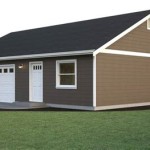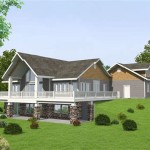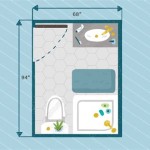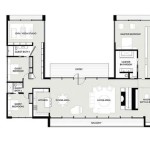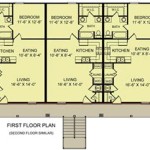Exploring 3000 Square Foot House Plans: Design Considerations and Solutions
A 3000 square foot house offers ample space for a growing family, accommodating a variety of needs and lifestyles. Whether you desire a spacious kitchen for culinary adventures, a home office for productivity, or a dedicated playroom for children, this size provides the flexibility to realize your vision. However, designing a 3000 square foot house requires careful planning and thoughtful consideration of various factors to maximize functionality, aesthetics, and overall living experience.
1. Understanding Your Needs and Priorities
The first step in designing a 3000 square foot house is to define your specific requirements and priorities. This involves a deep understanding of your family's size, current and future needs, and lifestyle preferences. Consider the following questions:
- How many bedrooms and bathrooms do you require? A larger family might need more bedrooms, while a couple seeking a guest room could opt for fewer bedrooms and a dedicated guest suite.
- What are your entertainment needs? Do you envision a dedicated home theater room, a spacious living area for gatherings, or a large patio for outdoor entertaining?
- Do you require a home office or workspace? If so, consider whether you prefer a dedicated room or a versatile space that can adapt to different needs.
- What are your storage needs? A large house necessitates adequate storage to maintain an organized and clutter-free living environment.
- Do you have specific design preferences or architectural styles in mind? Consider traditional, modern, contemporary, or farmhouse aesthetics, and how these align with your personal taste and the overall feel you desire for your home.
By answering these questions, you can develop a clear and concise list of priorities that will guide your design decisions.
2. Optimizing Space and Functionality
Once you have a clear understanding of your needs, the next step is to optimize the use of space within the 3000 square foot footprint. This involves considering the flow and functionality of various zones within the house, ensuring efficient use of every square foot.
- Open Floor Plans: Open floor plans can create a sense of spaciousness and allow for seamless transitions between different areas, such as the kitchen, dining room, and living room. This fosters a more connected and sociable atmosphere. However, it is crucial to ensure proper acoustic separation to avoid noise interference.
- Strategic Zoning: Define distinct zones within the house based on their purpose, such as a quiet zone for bedrooms, a social zone for entertaining, and a work zone for home offices or studies. This helps to create a sense of order and enhances the functionality of each area.
- Well-Defined Circulation: Consider the flow of traffic within the house and ensure easy access to all key rooms. Avoid creating bottlenecks or dead ends that impede movement and create a sense of clutter.
- Maximizing Natural Light: Large windows and skylights can flood the interior with natural light, creating a brighter and more inviting atmosphere. Consider the orientation of the house to optimize sunlight exposure throughout the day.
By focusing on space optimization and functionality, you can create a home that is both aesthetically pleasing and practical for your family's needs.
3. Embracing Sustainability and Energy Efficiency
In today's world, sustainability and energy efficiency are paramount considerations when designing a new home. Integrating these elements into your 3000 square foot house plan can reduce your environmental impact and save on energy costs.
- Energy-Efficient Appliances: Choose appliances with high Energy Star ratings. These appliances are designed to consume less energy, reducing your electricity bills and minimizing your carbon footprint.
- Solar Panels: Installing solar panels on your roof can generate clean energy, reducing your reliance on fossil fuels and saving on electricity bills. Solar panels are now more affordable than ever, making them a viable option for many homeowners.
- Proper Insulation: Adequate insulation in walls, ceilings, and floors can significantly reduce heat loss during the winter and heat gain during the summer. This improves comfort and reduces energy consumption for heating and cooling.
- Water-Saving Fixtures: Low-flow showerheads, toilets, and faucets can reduce water consumption without compromising performance, saving you money on water bills.
- Landscaping for Efficiency: Strategic landscaping can help to shade your home during peak sun hours, reducing the need for excessive air conditioning. Planting native vegetation can also contribute to a sustainable and eco-friendly landscape.
Implementing these sustainable design elements can create a home that is both environmentally conscious and financially responsible.
4. Creating a Cohesive Design
A 3000 square foot house offers ample opportunities to create a cohesive and aesthetically pleasing design. Consider the following elements to ensure consistency and harmony throughout the home:
- Color Palette: Establish a consistent color palette that flows seamlessly from room to room. Select a primary color for walls, accents, and furnishings, and complement it with secondary and tertiary colors to create depth and interest.
- Material Selection: Choose building materials that complement each other and contribute to the overall design aesthetic. Consider natural materials such as wood, stone, and tile, which can add warmth and texture. Ensure that the materials are durable and low-maintenance for long-term enjoyment.
- Furniture and Decor: Select furniture and decor that complements the color palette, material choices, and architectural style of the house. Consider incorporating statement pieces as focal points to add personality and visual interest.
- Lighting Design: Strategic lighting can transform the ambiance of a room. Use a combination of ambient, task, and accent lighting to create a warm and inviting atmosphere, highlight architectural features, and enhance the functionality of each area.
By paying attention to these design details, you can create a 3000 square foot house that is not only spacious but also visually appealing and harmonious.
5. Leveraging Technology for Smart Home Features
Technology plays an increasingly important role in modern homes, and a 3000 square foot house offers ample opportunities to integrate smart home features for enhanced comfort, convenience, and security.
- Smart Thermostat: A smart thermostat allows you to control your home's heating and cooling system remotely via a smartphone app, optimizing energy efficiency and comfort based on your schedule and preferences.
- Smart Security System: A smart security system offers remote monitoring, motion sensors, and door and window sensors for enhanced security and peace of mind. You can receive alerts on your smartphone if any activity is detected.
- Smart Lighting: Smart bulbs and switches allow you to control lighting remotely, set schedules, and adjust brightness levels, all within the convenience of a smartphone app. This can create a personalized lighting experience and improve energy efficiency.
- Smart Home Automation: Integrate smart home devices for a streamlined experience. For instance, you can automate your home's lighting, climate control, and entertainment systems based on your preferences and routines.
By incorporating technology, you can create a smart home that is not only comfortable and secure but also highly efficient and user-friendly.
6. Collaborating with Professionals
Designing a 3000 square foot house is a complex undertaking, and it's highly recommended to collaborate with professionals to ensure a successful outcome.
- Architect: An architect can provide expertise on structural design, building codes, site planning, and overall aesthetics. They can help you create a home that meets your specific needs and reflects your vision.
- Interior Designer: An interior designer can help you choose furniture, fabrics, and finishes that complement your design style and create a cohesive look for your home. They can also offer advice on lighting, color palettes, and space planning.
- Landscape Architect: A landscape architect can design your exterior spaces, including gardens, patios, and walkways, ensuring harmony between your home and the surrounding environment.
- Contractor: A reputable contractor will manage the construction process, ensuring adherence to plans, budgets, and timelines. They can also provide expert advice on selecting materials and construction methods.
By collaborating with professionals, you can benefit from their expertise and avoid potential pitfalls that could arise during the design and construction process.

Farmhouse Style House Plan 4 Beds Baths 3009 Sq Ft 927 1011 Houseplans Com

3 000 Square Foot House Plans Houseplans Blog Com

Farmhouse Style House Plan 4 Beds 3 5 Baths 3077 Sq Ft 120 271 Houseplans Com

List Of 3000 To 3500 Sq Ft Modern Home Plan And Design With 4 Bedroom

Modern Single Floor House Plan In 3000 Sqft Nuvo Nirmaan

Classical Style House Plan 4 Beds 3 5 Baths 3000 Sq Ft 477 7 Houseplans Com
House Plan Of The Week Modern Move Up Home Under 3 000 Square Feet Builder

European Style House Plan 3 Beds 2 5 Baths 3001 Sq Ft 52 150

3000 Sq Ft House Plans Free Home Floor Houseplans Com Kerala

4 Bed French Country House Plan Under 3000 Square Feet 56525sm Architectural Designs Plans

